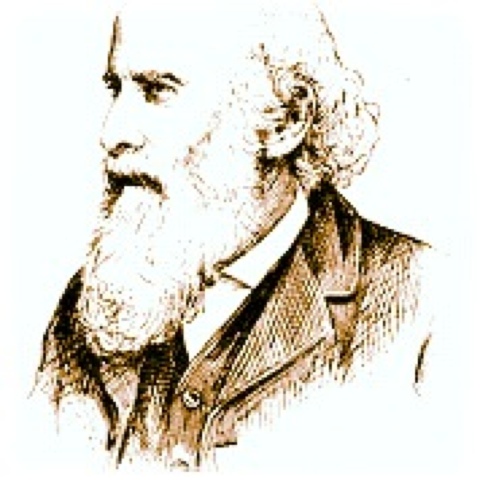The Poet-Actuary
Poet-Actuary - This sounds like an oxymoron. You imagine a poet as an emo, an individual characterized by great passion, moved by words, in touch with their feelings. Then you think of an actuary as a Maths-nerd, a person of a few words, not the life of the party. You wouldn’t necessarily associate the words poet and actuary. They belong to two different worlds... or do they?
Back again in the 80’s, as a schoolboy in a little French country town, I would have to learn the Fables of La Fontaine. Jean de La Fontaine was a story teller who used poetry to tell parables, or fables. He would come up with those unusual stories, such as the Frog and the Rat, starting with the statement:
“They to bamboozle are inclined,
Saith Merlin, who bamboozled are.”
His stories involved random animals teaching humans a life lesson - Thy Shalt Not Bamboozle Thy Neighbour. There was always the “moral of the story”. One of his famous fables was the Tortoise and the Hare, one inspired by the Greek poet Aesop...
“To win a race, the swiftness of a dart
Availeth not without a timely start.”
And so the hare lost the race because he failed to start it in time, while the slow tortoise won through consistency. La Fontaine was a great observer of human flaws.
Here is an interesting fact... the verses I quoted in this blog were translated from the original French by no less than Elizur Wright, prominent actuarial figure from the 19th century in the United States. Interesting also to note that after translating literally scores of fables of La Fontaine into English and publishing them, this great man of actuarial stature wrote a few fables himself. Elizur Wright was a true poet-actuary, one of a kind. He may well have proved the world that actuaries can have emotions.
However, my take is that Wright’s infatuation with the Fables of La Fontaine had less to do with an artistic inclination than it had to do with his atypical sense of morality. Wright didn’t translate poetry on love or any other matters, he translated moral teachings that happen to be poetic.
His sense of morality is noticeable in 1833. Back then, a professor of mathematics, he became the secretary of the American Anti-Slavery Society and published his famous work ‘The Sin of Slavery and its Remedy’. This was 30 years before Lincoln’s Proclamation of Emancipation. In his book, Wright appealed to the Christian values to build his case against slavery. He wrote in the introduction:
“Let us, Christian brethren, for I will not waste an appeal upon those who do not acknowledge the authority of the Gospel, dispassionately, and in the fear of God, look his inquiry in the face-Is the Colonization Society doing what the Gospel requires to be done for the removal of slavery and its concomitant sins?” He went on to demonstrate that slavery is a sin, using the Ten Commandments as well as the teaching of Jesus-Christ. Bear in mind that churches were closing their eyes on slavery, so his book would have been very confronting in a mostly Christian society such as the United States. Elizur Wright was driven by morality and justice...
When in 1837 he randomly fell upon a French edition of Jean de Lafontaine, the moral aspect of the fables resonated with his passion for right-living and prompted him to translate them.
Wright then found an interest in life insurance and wondered how it could alleviate humans’ miseries. In 1852, another happenstance would change the course of his work. He came across a booklet for a life insurance policy and discerned there was no possible way the company could make such promises and stay in business. He deplored this fraud in the Chronotype, his anti-slavery paper, and soon got the attention of all the insurance industry of Boston. They realised the man actually knew what he was talking about; he was a Maths professor after all! This was the start of a new career for Elizur Wright, he devoted the next few years to bringing actuarial integrity to the life insurance business. His contribution led to the requirement of minimum reserves – at a time when insurance companies were not fully funded. Thanks to Elizur Wright, life insurance ceased to be a legal Ponzi scheme, as it was in its early days.
What is most fascinating about Wright is that his work, be it with the anti-slavery movement or as a life insurance actuary, was one continuous endeavour to bring morality into society. This was his passion, and all he achieved was driven by this same passion.
Back again in the 80’s, as a schoolboy in a little French country town, I would have to learn the Fables of La Fontaine. Jean de La Fontaine was a story teller who used poetry to tell parables, or fables. He would come up with those unusual stories, such as the Frog and the Rat, starting with the statement:
“They to bamboozle are inclined,
Saith Merlin, who bamboozled are.”
His stories involved random animals teaching humans a life lesson - Thy Shalt Not Bamboozle Thy Neighbour. There was always the “moral of the story”. One of his famous fables was the Tortoise and the Hare, one inspired by the Greek poet Aesop...
“To win a race, the swiftness of a dart
Availeth not without a timely start.”
And so the hare lost the race because he failed to start it in time, while the slow tortoise won through consistency. La Fontaine was a great observer of human flaws.
Here is an interesting fact... the verses I quoted in this blog were translated from the original French by no less than Elizur Wright, prominent actuarial figure from the 19th century in the United States. Interesting also to note that after translating literally scores of fables of La Fontaine into English and publishing them, this great man of actuarial stature wrote a few fables himself. Elizur Wright was a true poet-actuary, one of a kind. He may well have proved the world that actuaries can have emotions.
However, my take is that Wright’s infatuation with the Fables of La Fontaine had less to do with an artistic inclination than it had to do with his atypical sense of morality. Wright didn’t translate poetry on love or any other matters, he translated moral teachings that happen to be poetic.
His sense of morality is noticeable in 1833. Back then, a professor of mathematics, he became the secretary of the American Anti-Slavery Society and published his famous work ‘The Sin of Slavery and its Remedy’. This was 30 years before Lincoln’s Proclamation of Emancipation. In his book, Wright appealed to the Christian values to build his case against slavery. He wrote in the introduction:
“Let us, Christian brethren, for I will not waste an appeal upon those who do not acknowledge the authority of the Gospel, dispassionately, and in the fear of God, look his inquiry in the face-Is the Colonization Society doing what the Gospel requires to be done for the removal of slavery and its concomitant sins?” He went on to demonstrate that slavery is a sin, using the Ten Commandments as well as the teaching of Jesus-Christ. Bear in mind that churches were closing their eyes on slavery, so his book would have been very confronting in a mostly Christian society such as the United States. Elizur Wright was driven by morality and justice...
When in 1837 he randomly fell upon a French edition of Jean de Lafontaine, the moral aspect of the fables resonated with his passion for right-living and prompted him to translate them.
Wright then found an interest in life insurance and wondered how it could alleviate humans’ miseries. In 1852, another happenstance would change the course of his work. He came across a booklet for a life insurance policy and discerned there was no possible way the company could make such promises and stay in business. He deplored this fraud in the Chronotype, his anti-slavery paper, and soon got the attention of all the insurance industry of Boston. They realised the man actually knew what he was talking about; he was a Maths professor after all! This was the start of a new career for Elizur Wright, he devoted the next few years to bringing actuarial integrity to the life insurance business. His contribution led to the requirement of minimum reserves – at a time when insurance companies were not fully funded. Thanks to Elizur Wright, life insurance ceased to be a legal Ponzi scheme, as it was in its early days.
What is most fascinating about Wright is that his work, be it with the anti-slavery movement or as a life insurance actuary, was one continuous endeavour to bring morality into society. This was his passion, and all he achieved was driven by this same passion.



Comments
Post a Comment